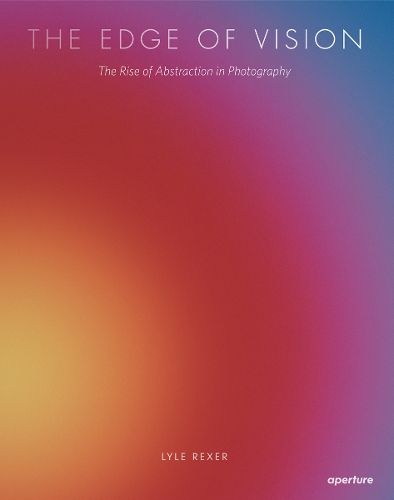Readings Newsletter
Become a Readings Member to make your shopping experience even easier.
Sign in or sign up for free!
You’re not far away from qualifying for FREE standard shipping within Australia
You’ve qualified for FREE standard shipping within Australia
The cart is loading…






From the beginning, abstraction has been intrinsic to photography, and its persistent popularity reveals much about the medium. The Edge of Vision: The Rise of Abstraction in Photography is the first book in English to document this phenomenon and to put it into historical context, while also examining the diverse approaches thriving within contemporary photography. Aperture is pleased to release this book in an affordable paperback edition. Author Lyle Rexer examines abstraction at pivotal moments, starting with the inception of photography, when many of the pioneers believed the camera might reveal other aspects of reality. The Edge of Vision traces subsequent explorations-from the Photo-Secessionists, who emphasized process and emotional expression over observed reality, to Modernist and Surrealist experiments. In the decades to follow, in particular from the 1950s through the 1980s, a multitude of photographers-Edward Weston, Aaron Siskind, Barbara Kasten, Ellen Carey, and James Welling among them-took up abstraction from a variety of positions. Finally, Rexer explores the influence the history of abstraction exerts on contemprary thinking about the medium. Many contemporary artists-most prominently Penelope Umbrico, Michael Flomen, and Adam Broomberg and Oliver Chanarin-reject classic definitions of photography’s documentary dimension in favor of other conceptually inflected possibilities, somewhere between painting and sculpture, that include the manipulation of process and printing. In addition to Rexer’s engagingly written and richly illustrated history, this volume includes a selection of primary texts from and interviews with key practitioners and critics, such as Alvin Langdon Coburn, Laszlo Moholy-Nagy, Gottfried Jagger, Silvio Wolf, and Walead Beshty.
$9.00 standard shipping within Australia
FREE standard shipping within Australia for orders over $100.00
Express & International shipping calculated at checkout
From the beginning, abstraction has been intrinsic to photography, and its persistent popularity reveals much about the medium. The Edge of Vision: The Rise of Abstraction in Photography is the first book in English to document this phenomenon and to put it into historical context, while also examining the diverse approaches thriving within contemporary photography. Aperture is pleased to release this book in an affordable paperback edition. Author Lyle Rexer examines abstraction at pivotal moments, starting with the inception of photography, when many of the pioneers believed the camera might reveal other aspects of reality. The Edge of Vision traces subsequent explorations-from the Photo-Secessionists, who emphasized process and emotional expression over observed reality, to Modernist and Surrealist experiments. In the decades to follow, in particular from the 1950s through the 1980s, a multitude of photographers-Edward Weston, Aaron Siskind, Barbara Kasten, Ellen Carey, and James Welling among them-took up abstraction from a variety of positions. Finally, Rexer explores the influence the history of abstraction exerts on contemprary thinking about the medium. Many contemporary artists-most prominently Penelope Umbrico, Michael Flomen, and Adam Broomberg and Oliver Chanarin-reject classic definitions of photography’s documentary dimension in favor of other conceptually inflected possibilities, somewhere between painting and sculpture, that include the manipulation of process and printing. In addition to Rexer’s engagingly written and richly illustrated history, this volume includes a selection of primary texts from and interviews with key practitioners and critics, such as Alvin Langdon Coburn, Laszlo Moholy-Nagy, Gottfried Jagger, Silvio Wolf, and Walead Beshty.